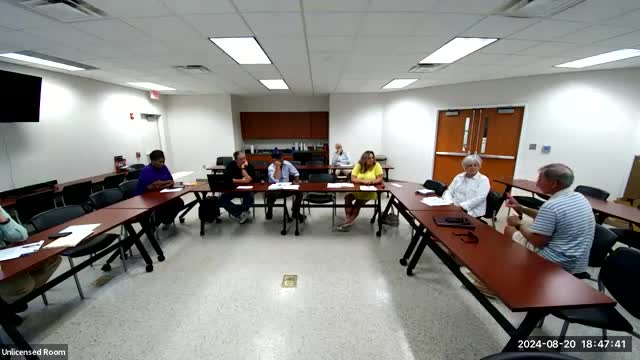County's Historic Poorhouse Site Reveals Unmarked Graves and Tourism Potential
August 22, 2024 | Northumberland County, Virginia
This article was created by AI summarizing key points discussed. AI makes mistakes, so for full details and context, please refer to the video of the full meeting. Please report any errors so we can fix them. Report an error »

During a recent government meeting, officials discussed the potential of a 140-acre site owned by the county, historically known as the \"poor house.\" This property, located on a hill along Dotlet Road, has a rich history dating back to 1789, when it served as a refuge for those unable to support themselves, including widows and orphans. The poor house operated until the mid-20th century and is notable for containing unmarked graves of former residents, many of whom were buried on-site.
Stuart Mackenzie, a staff member, presented intriguing research about the property, highlighting its scenic beauty and existing trails, which could attract tourism. The discussion included the idea of transforming the area into a haunted trail attraction, capitalizing on its historical significance and eerie past. However, the presence of graves complicates any plans for development, leading officials to reconsider its potential sale.
The site is currently landlocked, with a creek at the bottom of a steep hill, and some portions are being farmed, generating revenue for the county. The meeting raised questions about the future of the property, including whether it could be developed into a public park or made more accessible to the community. The historical foundation stones of the poor house reportedly remain intact, offering an opportunity for educational and cultural initiatives that could honor the site's legacy.
Stuart Mackenzie, a staff member, presented intriguing research about the property, highlighting its scenic beauty and existing trails, which could attract tourism. The discussion included the idea of transforming the area into a haunted trail attraction, capitalizing on its historical significance and eerie past. However, the presence of graves complicates any plans for development, leading officials to reconsider its potential sale.
The site is currently landlocked, with a creek at the bottom of a steep hill, and some portions are being farmed, generating revenue for the county. The meeting raised questions about the future of the property, including whether it could be developed into a public park or made more accessible to the community. The historical foundation stones of the poor house reportedly remain intact, offering an opportunity for educational and cultural initiatives that could honor the site's legacy.
View full meeting
This article is based on a recent meeting—watch the full video and explore the complete transcript for deeper insights into the discussion.
View full meeting
